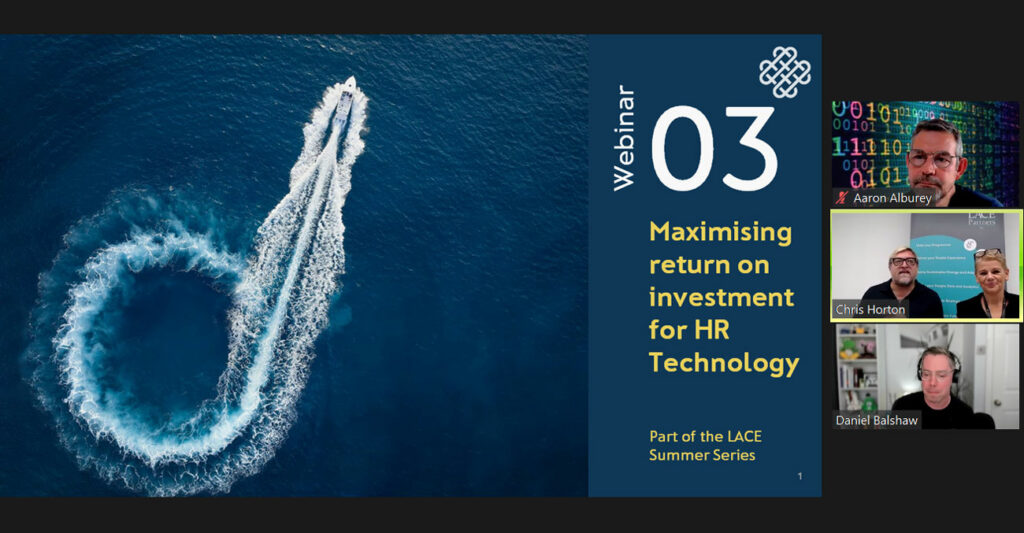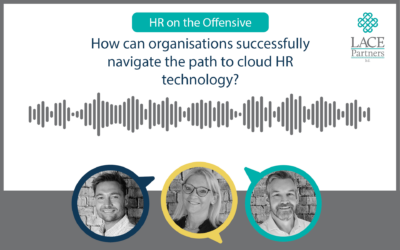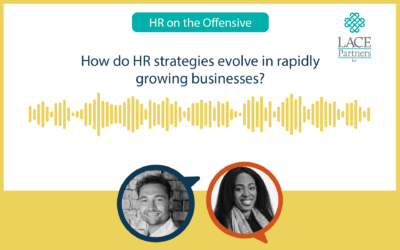In the third of our series of webinars focused on avoiding buyer’s remorse with your HR technology, some of our experienced LACE team hosted Daniel Balshaw from Oracle, as we looked to answer some of the key challenges that teams face when trying to effectively define return on investment (ROI) for any projects. What are the key elements to watch out for?

How can you focus on the value case of your HR technology investment?
At the heart of answering this question is assessing, ‘what do I value as the client of this particular piece of HR technology? What does our team/business value? What do our key stakeholders value?’
Before anything else, you need to focus on these core questions to assess how to deliver ROI. Inevitably, there will be questions related to financial returns, which is the business case focus, but that is often the easy part – NPV cost of licensing, implementation costs, etc. But so much of the return on investment, as we’ve talked about on our previous webinars on the Buyer’s remorse series so far, comes down to whether the expectations of the system or the change are delivered at the end. And quite often, those are values beyond just the financial. It may be about experience, i.e. how people experience the system and how they engage with it.
Understand:
What does the business want?
What does HR as a profession and the users want?
What do employees and line managers need, and what are they valuing as part of this change?
At LACE, we spend a lot of time upfront with the board and the programme team, getting them ready.
We track it through the programme and then as the transition to BAU is undertaken, quite often the original business case gets forgotten somewhere, there’s not an owner, there’s not someone tracking it or responsible for keeping it alive. Being able to regularly reflect and ask the question ‘why did we do this?’ is vital. What were we trying to achieve?
Quite often at LACE we’ll find ourselves working with clients thinking about replacing systems or replacing service providers because the original intent of why they got there has been lost in corporate history; why it was done originally gets lost and there has not been a strong ownership, sometimes the system is not needed to be replaced because simply refreshing people’s memories as to what the business was trying to achieve can refocus the objectives towards how to deliver the real ROI.
Tailoring the value to your stakeholders and your audience is vital. Consider from the CEOs perspective, for example, where they are thinking “How is this system helping me build competitive advantage? How is it improving my workforce productivity? What are the kind of broader impacts that this system is having on the business as a whole?”
Those same questions will not be the same across different stakeholders, as the Chief Human Resources Officer (CHRO) will be “how is this helping me to drive my people strategy? How is this helping me understand the workforce better?”
For the Chief Technology Officer (CTO) their focus will again be different, perhaps they are more concerned with how the system brings better compliance, better data security; ”has it helped me meet my GDPR requirements?”.
How do you decide the scope of your HR technology?
How do you best manage the functional change, both throughout the life of an implementation, but also afterwards when you’re moving into business as usual? The panel discussed how you have to break it into two sections:
- The original implementation – what was clearly defined at the beginning?
- What is the end state to that process? How do you maintain the momentum?
Many vendors will release functional updates on a quarterly basis, so as a customer there are new features every couple of months. That is a lot to manage and understand what new features need to be turned on so ensuring you use the same methodology that you used in the implementation to figure out what the current business problems that haven’t been solved through the initial release, or do you need to park any releases until after you have launched?
Forming an effective post-launch team is essential; have clearly defined roles, responsibilities and accountabilities and empower those people to be experts in both the system and the business requirements – able to efficiently fix any problems that exist in the business. Change doesn’t start until after the go-live and particularly with an HR implementation, that first year annual cycle that happens afterwards is when you really flush out many of those issues.
Who should be accountable for managing change?
Who should be responsible for monitoring the benefits of any HR technology project?
There are three core pillars that were discussed during the webinar:
- Ownership of the product – this is about governance and making sure that the product owner is supported, and it’s got a senior weight behind it.
- Day-to-day management – how do you make sure that you’re staying on top of your system configuration and those day-to-day requests that are coming in? Does that product owner role sit across HR and IT cross-functionally? And do they have the authority and skill set to manage stakeholders?
- Governance structure – Are the changes being prioritised throughout the whole business rather than just HR?
The importance of data
The most important way to keep driving ROI is to keep managing the change. All too often we’ve seen a system go in, it’s dropped when the project is finished, everyone walks away, the project is delivered and slowly it starts to go downhill because of a lack of adoption. Changes are not embedded and people are not taking up new functionality in the system, you get to a point where the view is the perception, the system is no longer doing what it was intended for. Often it is not the system, but the drive through the organisation has stopped.
We’ve selected just a handful of the discussions in today’s blog, but if you’d like to watch the webinar in full you can access it immediately after registering here.
To talk to us about your requirements or if you are experiencing buyer’s remorse, fill in the form below and ask us for an initial conversation.






